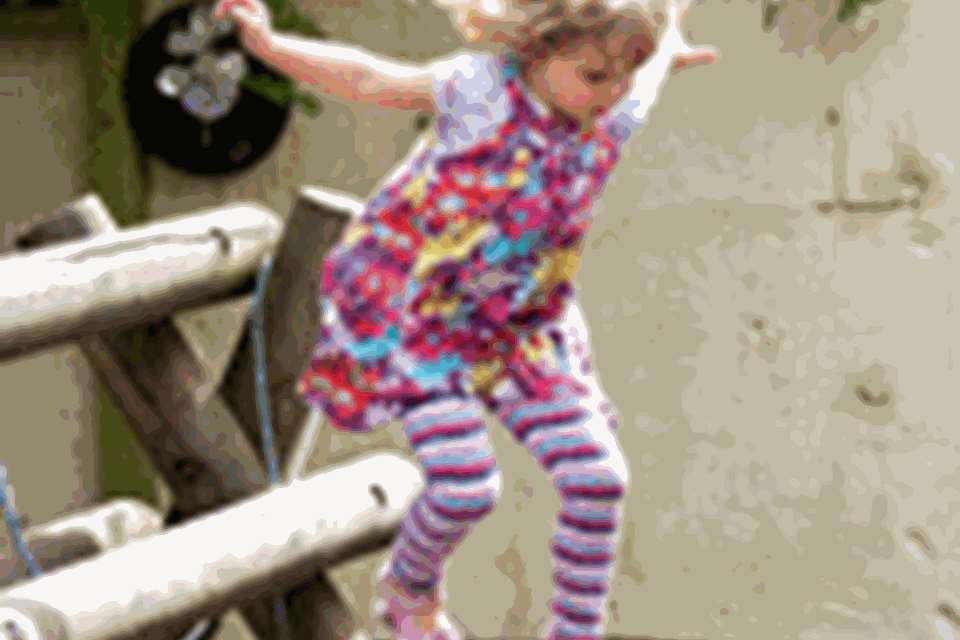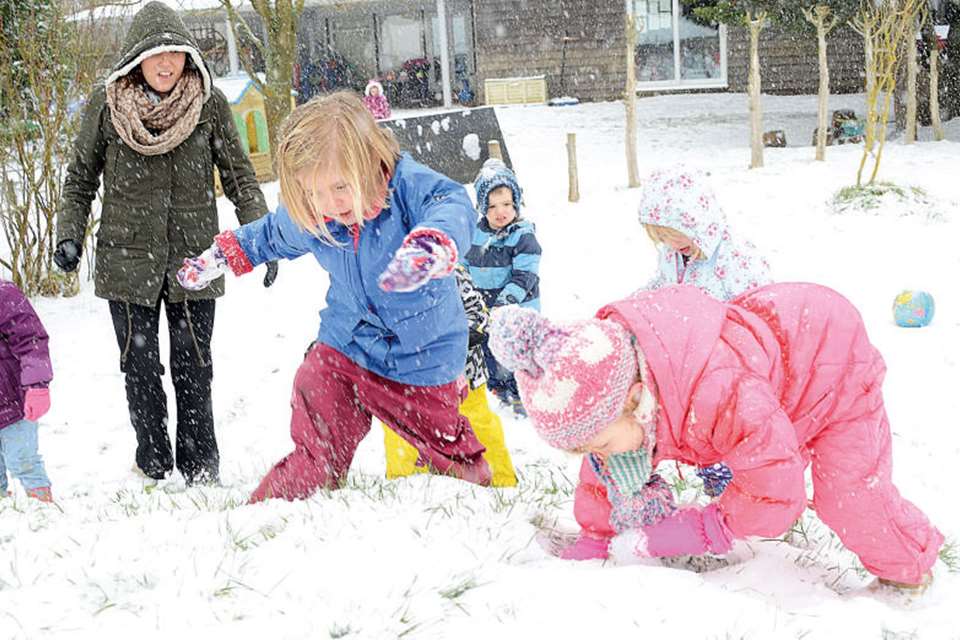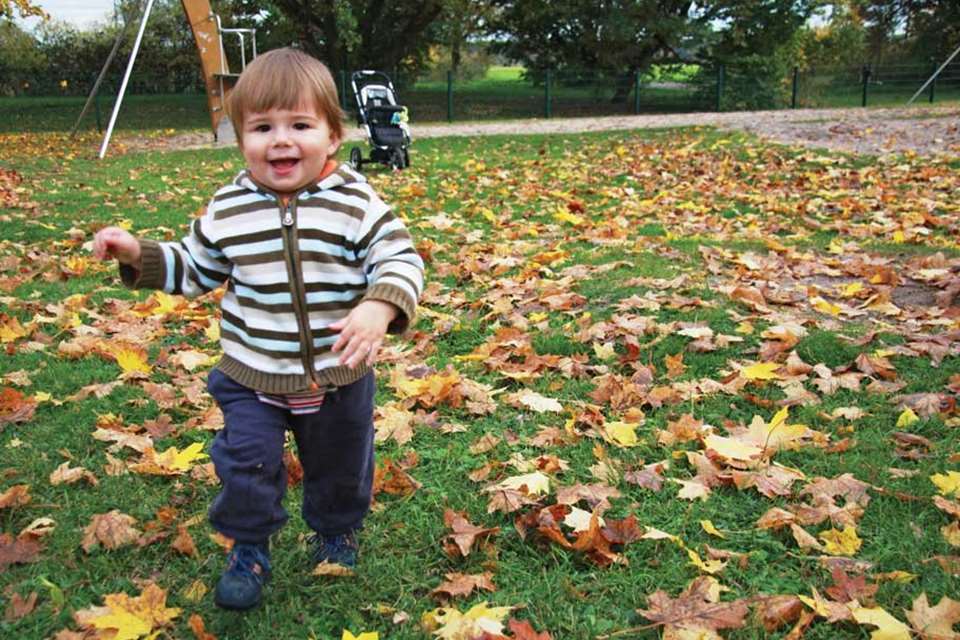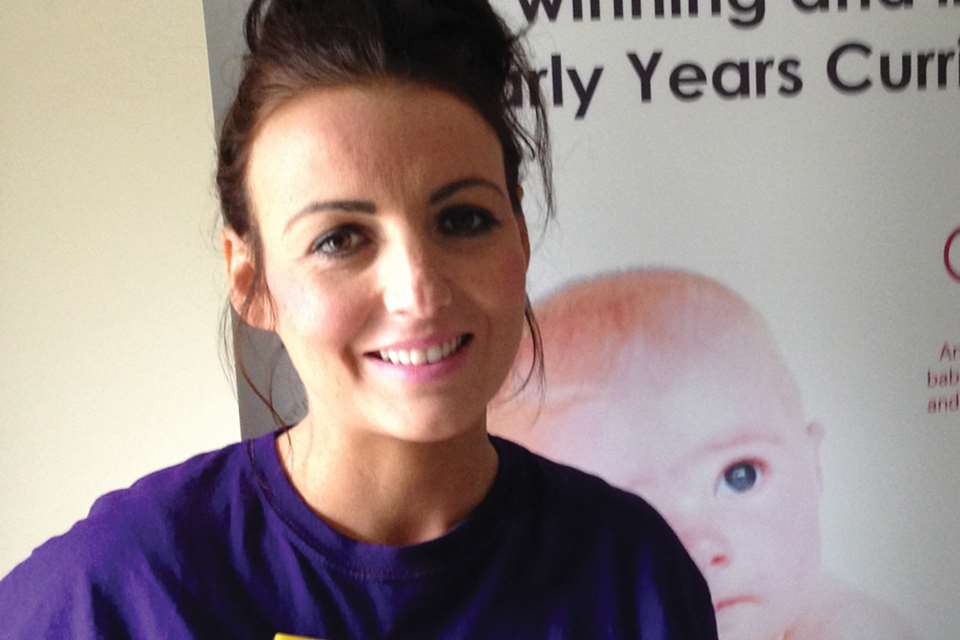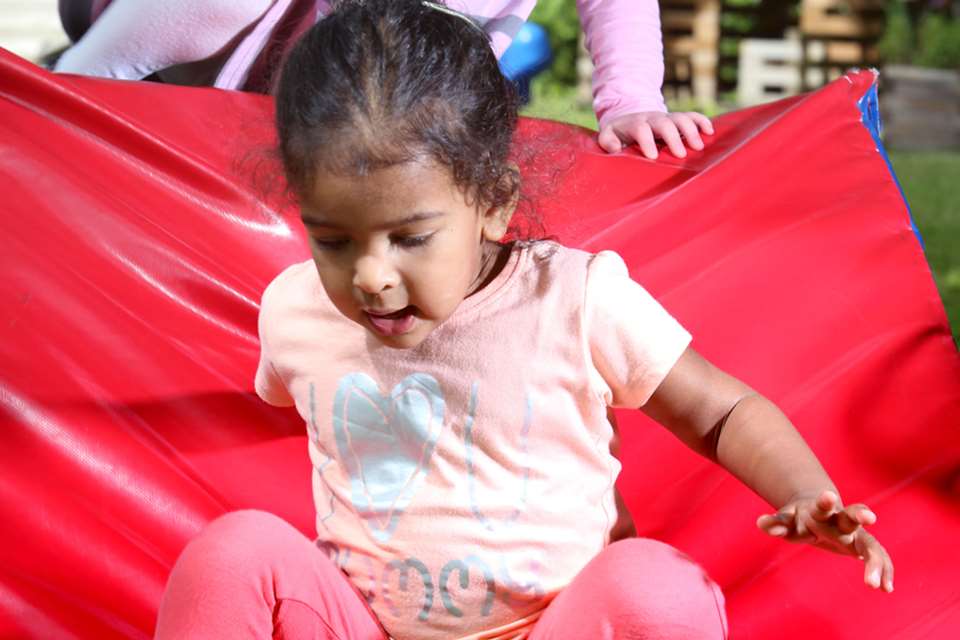Enabling Environments: Movement-Play - For mind and body
Carol Archer and Professor Iram Siraj
Monday, September 7, 2015
The freedom to explore certain types of movement is vital for both physical and mental development.Carol Archer and Professor Iram Siraj explain.
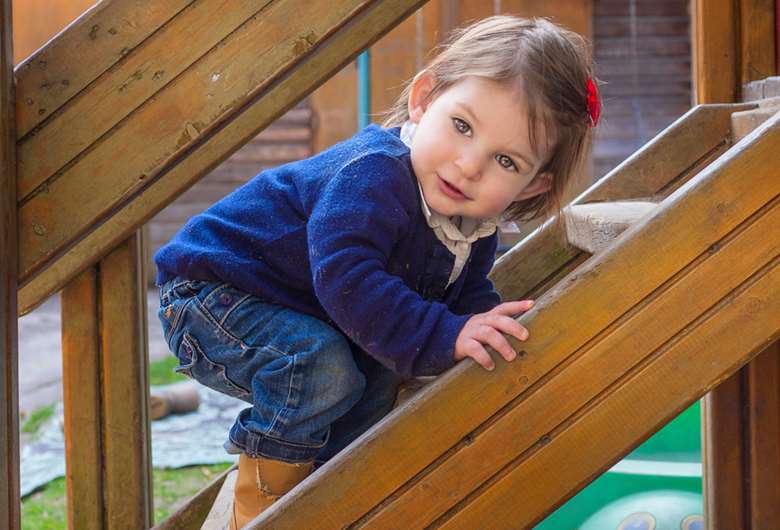
Ask early years practitioners about their childhood experiences of physical activity and most will respond with narratives of playing in parks, swimming in the sea, or jumping off the garage roof. All those who tell their stories recall how free and happy they were when they were playing outdoors, running around for what seemed like hours, rolling down hills, making dens, digging and playing with mud, or spinning on roundabouts.
These experiences are recalled taking place with brothers, sisters, cousins and friends and without any adult supervision. The participants enjoyed the risks they took, though with an element of trepidation - but most strikingly nearly all recall feeling a wonderful sense of freedom and exhilaration.
Roger Mackett's (2013) research says playing freely outdoors can more significantly contribute to healthier lives than structured physical activities at school or clubs. At a time when over a fifth of children are arriving in Reception either overweight or obese because of living more sedentary lives and poor nutrition, this is a useful reminder about giving children freedom to move and be physically active.
There are also other benefits for young children when they move in particular ways (see box). Certain types of movement have been shown to impact on later learning and development, yet are given little attention in some early childhood settings. When infants repeat specific movement patterns such as tummy crawling or crawling on all fours, important developments take place and particular areas of the brain are stimulated.
Conversely, when babies miss out on significant movements, then critical functions are compromised, affecting later development and thus their ability to reach their full potential at school (Lamont, 2007). Because of the lack of physical play experiences for children in our early childhood settings, Sally Goddard Blythe (2005) questions whether or not every child is ready for school in terms of their neuromotor development, which describes a range of physical skills, including balance, posture and co-ordination. However, what is reassuring for those working with young children is that these significant movement patterns can be revisited at any time in a young child's life.
The body is inextricably linked to the brain, which structures and restructures itself based on experiences. Increasing numbers of young children are attending early education settings from birth to six/seven years of age. As children's brains are susceptible to environmental influences, changes in the brain will undoubtedly take place as a result of their time at these settings. Therefore, the early childhood and early primary school are the optimum places to influence learning.
If this is the case, why then do we do our utmost to stop infants and young children moving by constraining their movement when we repeatedly tell them to stop running, sit still or make them fearful by telling them if they do this or that they will hurt themselves? We must think back to what we did when we were young and the risks we took before we contain and restrain our youngest children.
If we are serious about children's achievement and outcomes, then all those working with children from birth to six/seven years of age must allow children opportunities to engage in specific movement patterns and be physically active in their learning environments, and be able to extend their capabilities while taking part in challenging and vigorous activity (Archer and Siraj, 2015).
MOVEMENT-PLAY SCALE
During professional development, educators express keenness to implement what they have learned and plan what they will do when they return to their settings, which may include reorganising the environment by removing tables and chairs, searching cupboards for those unused resources or setting up a movement area.
Most importantly, they will return with an enlightened attitude towards one of the most vital domains for young children of physical development through movement-play. The impact of training and implementation of this curriculum area is crucial to the health, well-being and learning of our youngest children.
If this is the case, how do educators ensure that their practice develops and their environment improves over a matter of months? How do we ensure that our environment and practice is conducive to young children's learning and development? Is our classroom based on a sedentary approach to learning or does it require children to move and be active participants in their learning?
To this end, we have developed a short movement-play scale for settings to use to assess how well they are doing. The scale is included in our book (see box) and can be copied freely. The scale consists of three items:
- Item 1 Space and resources.
- Item 2 Adults engaging in movement with the children.
- Item 3 Planning for movement from observations of the children.
Each item is accompanied by notes which clarify statements in the indicators, giving details of appropriate resources and activities indoors and outdoors for all ages. Be sure to evidence the assessment you make of your setting.
USING THE SCALE
The movement-play scale has been used by the advisory team in Camden's Integrated Early Years Service, together with private and voluntary setting managers, to assess settings throughout the borough as part of the yearly quality improvement cycle. In this way, advisors and managers have been able to identify settings for further in-service training when the whole staff team, including managers and deputies, come together for the day for their first training or to refresh previous training received.
Recent data gathered by Camden's children's centres show a significant improvement in this domain of learning for all children since training in this area was introduced over six years ago. Almost all the children's centres cite Physical Development as a strength of the centre and have also been recognised for supporting behaviour management as well as children with emotional needs.
When the physical foundations for learning are secured in the pre-school years, then children have a better chance of entering the school system better equipped to cope with the demands of the more formal classroom environment. It is important, then, that early years settings plan for children aged three to six/seven years of age to be able to move freely from indoors to outdoors, and vice versa, and to have the space to move in various ways.
Of course, we must remember the child's first educator - the parents or carers - and the impact of the home learning environment on a young child's development. It is important then that we communicate to parents or carers the significance of the various physical movement experiences that will undoubtedly influence their child's brain development and learning.
We are presently embarking on further development of the movement-play scale, which will expand to include parents and sustained shared thinking in relation to physical development and movement-play.
TYPES OF MOVEMENT
Early years settings need to be planning for children aged three to six or seven years of age to have the space, indoors and outdoors, to move in the following ways: l playing on their backs l moving around on the tummy l crawling l rolling l tumbling l rocking l sliding l swinging l spinning l dancing l rough and tumble l space to run l climbing l balancing l jumping l tug of war l digging l hanging upside down l pulling up on monkey bars or ropes l transporting heavy things, either by carrying them or in wheelbarrows
READER OFFER
 Encouraging Physical Development through Movement-Play by Carol Archer and Iram Siraj (Sage Publications, £24.99) links the research on neuroscience to movement-play to show how early movements benefit later learning, including literacy and numeracy, and all domains of learning; physical, cognitive and social-emotional and interrelated.
Encouraging Physical Development through Movement-Play by Carol Archer and Iram Siraj (Sage Publications, £24.99) links the research on neuroscience to movement-play to show how early movements benefit later learning, including literacy and numeracy, and all domains of learning; physical, cognitive and social-emotional and interrelated.
Also included is guidance on what and how to provide for movement-play, an assessment scale and advice on engaging parents on this topic.
Nursery World readers can get £5 off Carol Archer and Iram Siraj's book. Simply enter the discount code UK15RE13 at the checkout when you order online at www.sagepub.co.uk. The offer is valid until 30 November 2015.
MORE INFORMATION
'Children's travel behaviour and its health implications', R L Mackett (2013), Transport Policy (selected papers from the Journal of the World Conference on Transport Research)
Children who need help by B Lamont (2007). Available online from the author's website at http://neurologicalreorganisation.org
Encouraging Physical Development through Movement-Play by C Archer and I Siraj (2015), Sage Publications
The Well-Balanced Child: movement and early learning. (second edition) by S Goddard Blythe (2005), Hawthorne Press.
Carol Archer is an early years advisory teacher, Camden Integrated Early Years Service, and Iram Siraj is professor of Education, UCL Institute of Education


